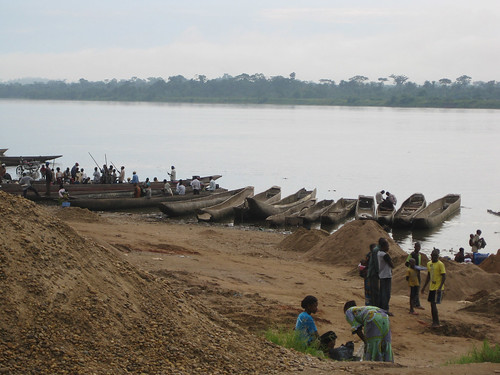When a Death Toll Rivals the Holocaust
by Laura Heaton, Democratic Republic of Congo, February 11, 2010
 With an estimated death toll of six million, the Holocaust is widely viewed as the singularly most devastating period in modern history. The word holocaust, derived from the Greek words meaning “burnt whole,” is now used almost exclusively to describe the state-sponsored massacre of European Jews. In the aftermath, countries came together to create the United Nations and craft international treaties intended to build a more cohesive international community that would be better prepared to respond in the future to horrors like they had just witnessed in Nazi Germany.
With an estimated death toll of six million, the Holocaust is widely viewed as the singularly most devastating period in modern history. The word holocaust, derived from the Greek words meaning “burnt whole,” is now used almost exclusively to describe the state-sponsored massacre of European Jews. In the aftermath, countries came together to create the United Nations and craft international treaties intended to build a more cohesive international community that would be better prepared to respond in the future to horrors like they had just witnessed in Nazi Germany.Yet despite the increased interconnectedness of the world and the international provisions in place to respond to humanitarian crises, the conflict in eastern Congo rages on even today without an effective international response – surpassing the Holocaust in number of years and now, even in number of lives lost.
In 2007, the International Rescue Committee, or IRC, released the results of a pivotal study, which found that 5.4 million people had died in eastern Congo since 1998. They also found that the death toll was mounting at a rate of about 45,000 people per month. But those figures are now nearly three years old. In a New York Times op-ed this week, Nick Kristof’s calculation caught my attention: “That would leave the total today, after a dozen years, at 6.9 million.”
Think about that … 6.9 million. It’s hard to fathom.
The vast majority of people who have died in eastern Congo perished from non-violent causes such as malaria, malnutrition, and other preventable diseases – symptoms of a conflict that has left Congo destabilized, its people displaced, medical services hard to come by, and food scarce. The death toll also masks the fact that an untold number of women, children, and even men who survive have suffered brutal rapes that leave lifelong physical and emotional scars.
Of course, a defining feature of the Holocaust is that a government masterminded it. What’s happening in Congo today isn’t genocide, though the legacy of genocide in neighboring Rwanda certainly lingers in the eastern Congo. There are a variety of perpetrators, motivated by ethnic tensions, the desire to control resources, opportunistic attempts to benefit from the lack of order – all facilitated by the impunity that reigns.
Furthermore, counting deaths in Congo is inherently challenging – precisely because of the violence and lack of infrastructure – as demonstrated in a recently reignited dispute over the IRC’s 2007 findings. Congo expert Jason Stearns provides an overview and his own insights, coming down in support of IRC’s initial findings, which after reading about the debate, I’m inclined to do too. (Science magazine’s blog has the full back-and-forth between IRC and the researchers at Canada’s Simon Fraser University who disputed IRC’s study.)
But the bottom line is that the sheer number of people who have died in eastern Congo over the past 12 years is unacceptable. Absent a public outcry to compel world leaders to make ending the conflict a priority -– by fully utilizing the tools at their disposal and finding other ways to put the pressure on those who benefit from Congo’s instability –- expect to see the death toll make new, horrific records.
We can all take action, too. Next week presents a rare opportunity to reach out to your members of Congress face to face in their home districts, and tell them that you expect U.S. leaders to take firm action to end the trade in conflict minerals that is helping to fuel the violence in eastern Congo. Visit Raise HOPE for Congo for details and to sign up for Advocacy Days during the Presidents Day recess, February 15–19, 2010.
Photo credit: Radio Okapi
Link: http://genocide.change.org/blog/view/when_a_death_toll_rivals_the_holocaust
